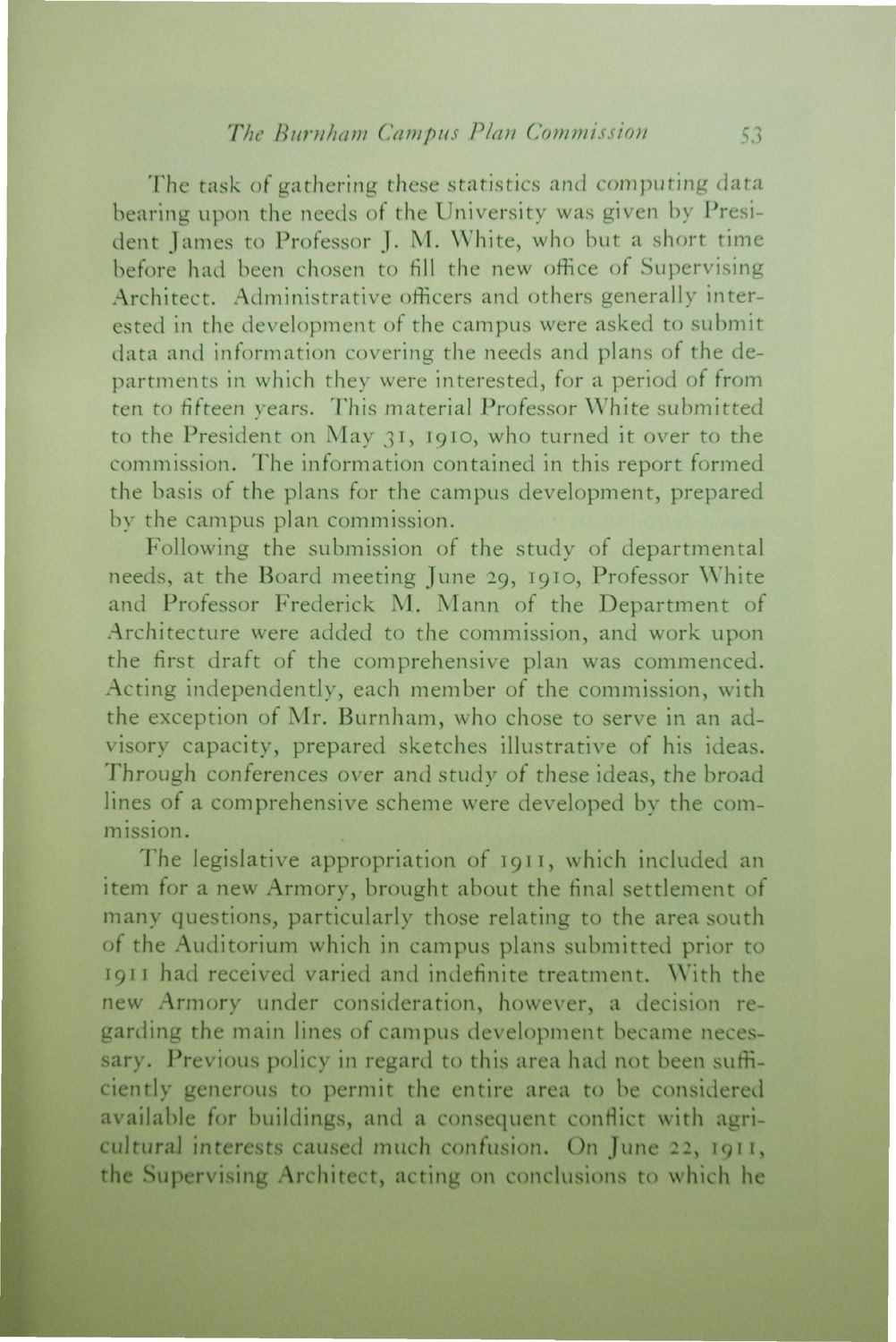| |
| |
Caption: Book - 30 Year Master Plan (Tilton & O'Donnell)
This is a reduced-resolution page image for fast online browsing.

EXTRACTED TEXT FROM PAGE:
The Burnham Campus Plan Commission 53 The task of gathering these statistics and computing data bearing upon the needs of the University was given by President James to Professor J. M. White, who but a short time before had been chosen to fill the new office of Supervising Architect. Administrative officers and others generally interested in the development of the campus were asked to submit data and information covering the needs and plans of the departments in which they were interested, for a period of from ten to fifteen years. This material Professor White submitted to the President on May 31, 1910, who turned it over to the commission. The information contained in this report formed the basis of the plans for the campus development, prepared by the campus plan commission. Following the submission of the study of departmental needs, at the Board meeting June 29, 1910, Professor White and Professor Frederick M. Mann of the Department of Architecture were added to the commission, and work upon the first draft of the comprehensive plan was commenced. Acting independently, each member of the commission, with the exception of Mr. Burnham, who chose to serve in an advisory capacity, prepared sketches illustrative of his ideas. Through conferences over and study of these ideas, the broad lines of a comprehensive scheme were developed by the commission. The legislative appropriation of 1911, which included an item for a new Armory, brought about the final settlement of many questions, particularly those relating to the area south of the Auditorium which in campus plans submitted prior to 1911 had received varied and indefinite treatment. With the new Armory under consideration, however, a decision regarding the main lines of campus development became necessary. Previous policy in regard to this area had not been sufficiently generous to permit the entire area to be considered available for buildings, and a consequent conflict with agricultural interests caused much confusion. On June 22, 1911, the Supervising Architect, acting on conclusions to which he
| |